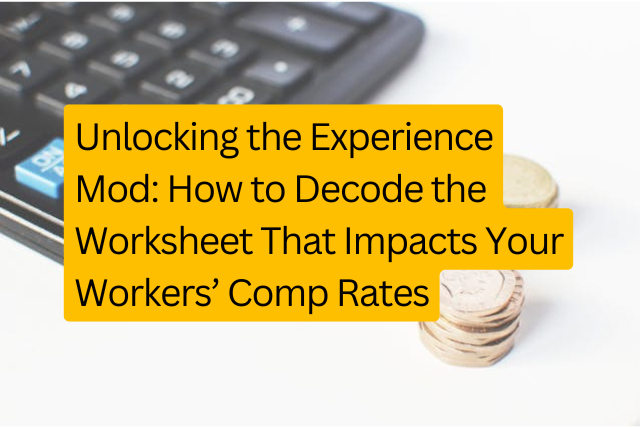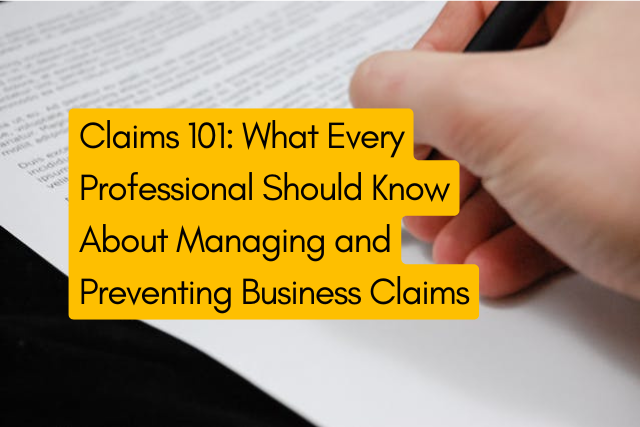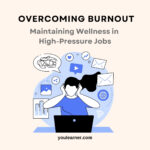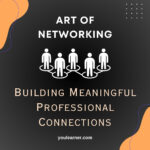Why Your Experience Mod Score Could Make or Break Your Business
If you’re an employer paying for workers’ compensation insurance, the Experience Modification Rating (EMR) or Experience Mod is more than just a number—it’s a game-changer. It can influence your premiums by tens or hundreds of thousands of dollars, affect your competitiveness in contract bids, and signal how safe—or risky—your business is perceived to be.
But for many, the Experience Mod Worksheet looks like a foreign language: acronyms, decimals, multiple years of claims, classifications—it’s enough to make anyone feel lost.
In this deep dive, we’ll break it all down:
- What the Experience Mod is
- How it’s calculated
- What each part of the worksheet means
- How you can manage and improve your score
Let’s turn confusion into clarity—and make this powerful financial lever work for you.
🧠 1. What Is an Experience Modification Rating (EMR)?
The Experience Mod is a numeric representation of your company’s workers’ compensation claims history compared to other businesses in your industry and state.
- A score of 1.00 means you’re average
- A score above 1.00 = higher-than-average losses → higher premiums
- A score below 1.00 = safer-than-average → discounts on premiums
Think of it as a credit score for your workplace safety and risk history.
📊 2. Why It Matters (Big Time)
💰 Impact on Workers’ Comp Premiums
Premiums = Manual Rate × Payroll × Experience Mod
So even a small increase in your mod (say 1.25) can raise your premiums by 25%.
🔨 Impact on Contract Eligibility
Many contractors and public agencies require a mod of 1.0 or lower to even bid. A high mod can disqualify you from valuable jobs.
📉 Impact on Reputation
Your mod is a reflection of your safety culture. A high mod may imply poor training, risky practices, or inadequate injury prevention.
📄 3. What’s Inside the Experience Mod Worksheet?
The worksheet is issued annually by your state’s workers’ comp bureau (or NCCI in most states) and includes three years of claim and payroll data.
Key Sections:
- Policy Years
- Classification Codes
- Payroll by Class Code
- Actual vs. Expected Losses
- Primary vs. Excess Losses
- Credibility Factors
- Calculated Mod Score
🧩 4. Experience Mod Calculation – The Core Formula
Here’s a simplified version of how the mod is calculated:
Mod = (Actual Losses × Weighting Factors) / Expected Losses
Let’s break that down:
🔷 Actual Losses
This includes all claims costs (both medical-only and lost-time injuries) during the experience period.
- Primary losses: First ~$17,000 of a claim (varies by state/year)
- Excess losses: The portion above the primary limit
🔶 Expected Losses
The amount insurers expect you to have in claims based on:
- Industry averages
- Classification risk level
- Your company’s size and payroll
🔹 Weighting Factors
These give more importance to frequency than severity—why? Because frequent small claims often indicate systemic safety issues.
📆 5. The Experience Period: Timing Matters
The mod is calculated using claims data from a 3-year period, excluding the most recent year.
Example:
If your renewal is in 2025, your mod is based on:
- 2022
- 2021
- 2020
2023 is excluded to allow claims to mature before being assessed.
🔍 6. Primary vs. Excess Losses: Why They Matter
🔹 Primary Losses (The “Hot Zone”)
These drive the mod much more than excess losses. Why?
- They reflect claim frequency, a better predictor of future risk
- Two $20K claims are worse than one $40K claim, even though the dollar value is the same
Tip: Controlling small, frequent claims is crucial to improving your mod.
🏗️ 7. Understanding the Mod Worksheet in Detail
Here’s how to interpret a typical worksheet:
Section A: Employer Info and Effective Date
Basic details like company name, FEIN, policy period.
Section B: Class Codes and Payroll
Breakdown of each job classification and total payroll over the experience period.
Section C: Expected Losses
How much loss is typical for your classification based on your payroll.
Section D: Actual Incurred Losses
Claims filed (including both paid and reserved amounts).
Section E: Credibility Factor
A factor that adjusts the weight of your data depending on company size. Larger companies = more credible data.
Section F: Final Mod Score
The resulting number—your mod.
📉 8. What Drives Up Your Mod?
- Frequent claims, even small ones
- Lack of return-to-work or light-duty options
- Unreported near misses that later turn into costly claims
- Poor claims management (letting reserves build up)
- High-severity incidents (especially with lost-time injuries)
🧠 9. How to Lower and Maintain a Healthy Mod
✅ 1. Implement a Safety-First Culture
- Train employees regularly
- Conduct audits and hazard assessments
- Empower employees to report risks without fear
✅ 2. Focus on Claim Frequency Reduction
- Address root causes
- Investigate all incidents thoroughly
- Celebrate safety milestones
✅ 3. Establish a Return-to-Work Program
- Light-duty jobs help reduce claim costs
- Lowers lost-time expenses, impacting your mod favorably
✅ 4. Partner With a Proactive Insurance Broker
- Ensure accurate claims classification
- Monitor open claims and reserves
- Advocate for you with carriers and state bureaus
✅ 5. Review Your Mod Worksheet Annually
- Verify payroll figures
- Challenge misclassified claims
- Spot and correct errors before they cost you
⚙️ 10. Tools & Resources to Help Decode Your Mod
- NCCI’s Mod Estimator Tool (for participating states)
- State-specific Mod Calculators (e.g., California’s WCIRB tools)
- Workers’ Comp Consultants or Safety Experts
- Brokers specialized in construction, logistics, or industrial sectors
🧠 11. Experience Mod Strategy: Be Proactive, Not Reactive
Too often, companies focus on their mod after it spikes—when insurance renewals skyrocket or a big contract is lost.
Smart companies:
- Track claims in real-time
- Have quarterly reviews with their broker
- Use predictive tools to forecast next year’s mod
Just like credit scores, your mod score is manageable—if you monitor and maintain it.
✅ Conclusion: Take Control of Your Experience Mod
The Experience Mod isn’t just a number—it’s a reflection of your safety culture, claims practices, and operational discipline.
When you understand how it’s calculated and how it affects your business, you unlock:
- Lower insurance premiums
- Greater contract eligibility
- Stronger negotiation power
- A safer, more productive workplace
Don’t leave your mod to chance. Learn it, track it, improve it—and use it as a competitive advantage.







